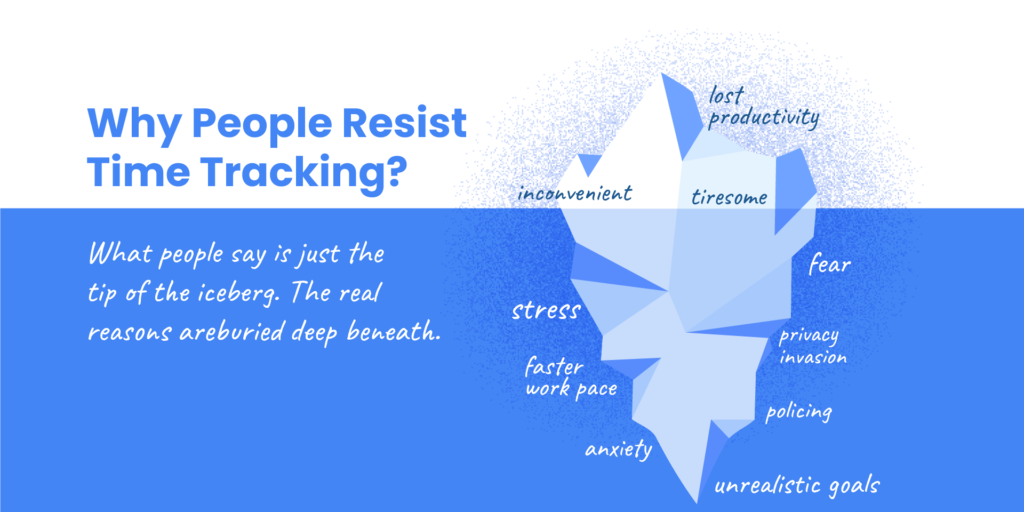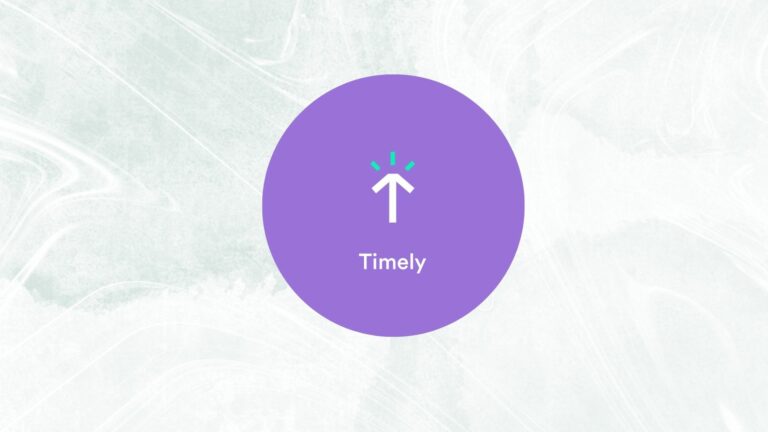One of the primary concerns of tracking whatever you are has a significant drain on your productivity. And that is correct. Keeping track of anything consumes time and energy.
For instance, if you want to know how your firm is performing, you must track sales and expenses, which takes time and work. While it is true that you can increase your productivity by not measuring your earnings, no one complains because the effort is well worth it.
Likewise, tracking your progress is critical. There is no way around it; it takes time. However, if the value of time tracking data surpasses the loss of productivity, this is acceptable. It’s a reasonable trade-off: you’re giving up some productivity now to acquire business information that will benefit your organization in the long run.
Table of contents
Why Track Time?
Time tracking data can empower people to improve their work habits. It can help find answers to questions such as “Does most of their time go towards their core priorities, or are they constantly distracted by smaller non-vital tasks?”
Time tracking is the most efficient method for employees and management to understand how their time was spent and where improvements can be made. Time management is critical not just for work, but also for the personal lives of each employee. Accurate time tracking results in fewer payroll errors, better collaboration among remote teams, which in the end benefits employees.
According to Harvard Business Review research on time tracking, the US economy loses $7.4 billion in output each day due to workers who do not record their hours. Employees frequently overlook the time spent on work-related communication, such as emails, phone calls, and meetings.
In simpler words, time tracking is essential for the success of businesses.
Why Employees Might Resist Time Tracking?

Tracking time isn’t necessarily a favorite activity for most employees. Employee time tracking can be a difficult nut to crack for many firms. The word “tracking” implies that they are being observed and their every move is being recorded. It’s natural for those thoughts to carry negative connotations.
The main drawbacks of time tracking include reduced employee morale and excessive micromanagement. It also means extra costs and reduced efficiency for managers.
Here are the main reasons why employees might resist time tracking.
1. Logging hours is a drag
For the majority of employees, filling out timesheets feels pointless. It could be viewed as a burden that stops them from performing their “real” job. The worst part is that it is typically required after other tasks are completed, making it feel like an additional piece of work at the end of a long day.
The underlying reason for these attitudes is a lack of understanding regarding the necessity of time tracking. Effective communication and onboarding are critical for employees to understand why time tracking is not an afterthought, but an integral part of their job. Your employees must understand tracking time keeps the entire team on the same page. Efficient time tracking benefits both themselves and the business in order to commit to time tracking.
2. Time Tracking can Feel Obtrusive
Hours of time tracking can feel intrusive and generate an impression of being micromanaged and scrutinized. At the heart of employee’s concerns is the plain fact that nobody actually works eight hours a day, and only due to time tracking they may be penalized for it.
The primary reason for this reaction is that staff are unaware of the intended use of the data. They may be concerned that it will be used against them and in favor of the employer in secret.
Individuals may believe that a time tracking system might be used to promote unreasonable expectations and a faster work tempo, thereby increasing stress and anxiety. When you are not honest about why and how certain processes are used, these reactions are understandable. Allowing this attitude toward time tracking to develop is detrimental to the corporate culture and alienates team members.
3. Timesheets are Prone to Error
Another systemic issue with time tracking that affects both employers and team members is that timesheets are frequently required at the end of the week or month. They have long since forgotten what they did, but are nevertheless required to account for it. Keeping track of hours becomes a guessing game.
Manual or paper time tracking results in mistakes, errors, and even abuse. While the majority of employees will attempt to recall the specific tasks and times they completed and report them accurately, some team members may take advantage of this chance to clock in more hours than they actually worked. This can result in instances of time theft.
How to Motivate Employees to Track Time
While time tracking may seem to be intrusive, with the right explanations and clear procedures, you can get your team to track time and increase their productivity.
1. Explain Why 🔑
Time tracking is not solely your responsibility; it is also your employees’.
Trust is critical for teamwork to succeed. Forcing employees to track their time without any proper clarification creates suspicion and may result in employees falsifying their time logs.
To avoid this, assure that everyone on your team understands why time tracking data is necessary and how it benefits them, the business, and most importantly the clients. Honest and transparent communication go a long way toward building trust, and if done correctly, you may not even need the following advice.
“Instead of telling your team “track your time!” continuously reframe the concept and tell them why logging their progress is so very important.”
Most employees really want their firm to flourish and want to contribute to the organization’s success. So try to rationalize why it is important to track time for accurate billable hours on projects and for enhanced productivity and organizational success. For example, You can show your employees time tracking is critical for many businesses when it comes to charging clients, and may even be a legal requirement for some projects.
💡 Pro Tip: Keep in mind that employee productivity is frequently a function of sound management practices, so keep communication open and uninhibited.
2. Set Clear Guidelines 📒
If you want time tracking to be effective, you need a time tracking system. Your and your team’s hard work will be in vain if individuals do not monitor their time under the appropriate projects or if they use incorrect tasks or labels. Before your team begins tracking, ensure that everyone understands the right technique to log their time.
As with the first principle, describing why something must be done in a certain manner facilitates system adoption.
3. Use Two-Way Communication 💬
It’s a good idea to allow employees to provide input on the time tracking process so that you’re aware of any issues in advance. Allowing people to contribute increases their sense of connection and willingness to participate.
That is how you may help them view time monitoring as an activity they want to participate in proactively, rather than as an order handed down to them.
Your employees’ participation paves the road for your firm to improve its time monitoring. Because staff employees are the ones who use the system, they are the most knowledgeable about what works and what does not. They are your primary source of suggestions for enhancements. Collect their recommendations and complaints via meetings or online questionnaires, and organize frequent group meetings to discuss your time monitoring policies.
4. Automatic vs Manual Time Tracking System ⏱️
The best approach to motivate employees to track time is to adapt a time tracking software or system that seamlessly integrates into your organization’s workflows rather than disturbing them. You must ensure that the tracking system is simple and possible. It should not be time-consuming or complicated.
One of the best ways to do this is by adopting an automatic time tracking tool. By automating how you track time enables employees to concentrate entirely on their work while maintaining full-time tracking compliance – avoiding distractions and human errors. Employees can forget about timers, taking note of their start and end times, and manually inputting them.
“Research carried out by Accelo shows that timesheets that rely on manual input are only 67% accurate most of the time.”
With automated time tracking you get a precise daily record of all the time you spend in meetings, conferences, reading emails, websites, and Zoom calls with zero effort.
There are many time tracking software you can use but we recommend TimeTackle. Using a solid time tracking app like Time Tackle can make keeping track of your employee’s time a breeze. Employees only need to turn on their timers when they start working and turn it off when they finish and TimeTackle’s robust tracking system will handle the rest. As simple as that.
What makes TimeTackle special is that it caters to all types of users’ time management needs. You can sign for yourself as well as for your team members so that your organization can achieve true-time efficiency. Audit and adjust your schedules to make your team time efficient. It utilizes machine learning to track and analyze your key performance indicators(KPIs) and priorities and assists you and your team in getting the most out of your working hours and most importantly save time.
To take the time tracking process one step further check out Time Tackle Features and boost your and your team’s productivity to the next level.
5. Celebrate Results 🙌
Using rewards is an extremely effective method of changing people’s behavior. The main idea here is what psychologists refer to as “positive reinforcement” – rewarding someone for exhibiting the desired behavior in order to increase their likelihood of repeating it in the future.
“Tracking time is no different. If you can, create opportunities to show your appreciation for your team’s hard work. If it’s tied to time tracking, that’s even better.”
When people believe their success is linked to specific rewards, they are more likely to embrace a new behavior. If you lack the funds to offer workers bonuses based on their time logs, you can compensate them with alternative advantages, such as paid time off or small gifts.
Another potentially useful strategy is to make time-tracking a competitive activity. For instance, displaying timesheets on the office wall for all to see encourages more strict tracking as employees strive to outperform their colleagues and friends.
Summary
Getting employees to track time can be a difficult process. Nonetheless, follow these tips and motivate your employees to track time, and make the transition as seamless as possible. It can take a little experimentation, and you might run into some resistance, but once people get into the groove of tracking time, you’ll be surprised by how much your team has improved. And of course, much of this comes down to using the correct tool. If you’re interested in learning more about how TimeTackle can help your team get up to speed with time tracking, you can learn more about it here or talk to sales to arrange a test drive.


